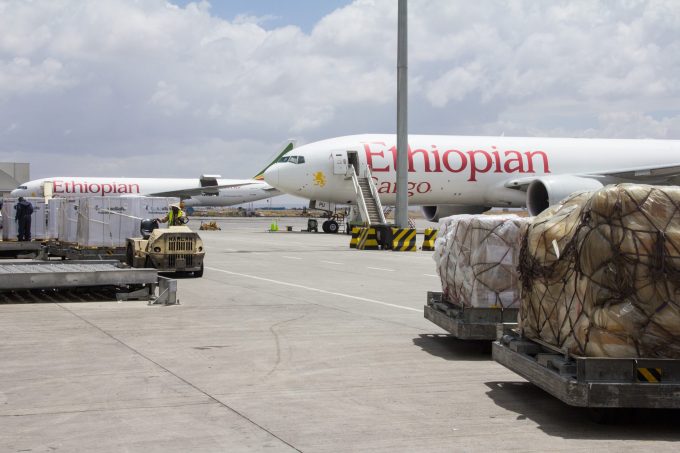Air cargo players want 'cohesion and consistency' in how aviation reports emissions
Current CO2 air cargo emission calculating methodology has been compared to the VW emissions scandal, ...
GM: RAISING THE ROOF GGM: IN FULL THROTTLE GZIM: MAERSK BOOST KNIN: READ-ACROSSMAERSK: NOT ENOUGHMAERSK: GUIDANCE UPGRADEZIM: ROLLERCOASTERCAT: HEAVY DUTYMAERSK: CATCHING UP PG: DESTOCKING PATTERNSPG: HEALTH CHECKWTC: THE FALLGXO: DEFENSIVE FWRD: RALLYING ON TAKEOVER TALKODFL: STEADY YIELDVW: NEW MODEL NEEDEDWTC: TAKING PROFIT
GM: RAISING THE ROOF GGM: IN FULL THROTTLE GZIM: MAERSK BOOST KNIN: READ-ACROSSMAERSK: NOT ENOUGHMAERSK: GUIDANCE UPGRADEZIM: ROLLERCOASTERCAT: HEAVY DUTYMAERSK: CATCHING UP PG: DESTOCKING PATTERNSPG: HEALTH CHECKWTC: THE FALLGXO: DEFENSIVE FWRD: RALLYING ON TAKEOVER TALKODFL: STEADY YIELDVW: NEW MODEL NEEDEDWTC: TAKING PROFIT

The Africa to Asia trade route has experienced a significant boost in cargo demand recently, but concerns have arisen over potential logistical problems caused by conflict in Sudan.
In April, IATA data showed Africa as the only positive performer as global air cargo demand declined and, notably, cargo on the Africa to Asia tradelane was up 20% year on year.
“Our monthly statistics show there is sufficient capacity to support the increasing air cargo demand in recent months,” said Bojan Wang, an IATA economist in the industry analysis unit.
Since the Chinese market reopened in January, monthly flights to Africa have increased by 150% and flights from Africa to China have increased by 146%. Mr Wang expects this growing trend to continue through the year.
And the return of belly hold capacity has been welcomed by shippers as freighter capacity has been limited. Only a handful of operators like Ethiopian have a dedicated freighter fleet. However, there is a noticeable absence of Chinese freighter capacity between the two regions.
A source at Ethiopian Airlines (ET) told The Loadstar: “We have enough capacity to connect and serve Africa and Asia via air and sea-air modality logistics services. However, in the future, partnership options [potentially with Chinese operators] will be reviewed in line with the prospect business growth and the change in the overall macro-economic environment.”
ET shipments include fruit and vegetables and technological devices to and from Asia. According to the China Africa Research Initiative, the value of China-Africa trade in 2020 was $176bn, down from $192bn the previous year, due to supply chain disruption caused by Covid.
But even with demand between Asia and Africa showing positive trends, there are concerns about political instability in places like Sudan, that might create logistical problems.
“Sudan’s air space is closed and supply chains have been disrupted in the region,” said Mr Wang. “Sudan is among the largest producers of grain harvests in Africa, and the conflict might undermine efforts to boost wheat production there. As observed in Ukraine, the conflict in Sudan will likely force air cargo carriers to suspend or modify operations, causing knock-on effects to supply chains.”
Looking ahead, the most important challenge, and opportunity, is to significantly increase Africa’s share in global trade and air cargo activities, including balancing inbound and outbound cargo. This was a hot topic at the TIACA regional summit in Kenya last week.
IATA hopes its recently launched Focus Africa Initiative will tackle the challenges in Africa’s cargo sector.
“Currently, Africa only accounts for around 3% of global trade and 15% of intra-region trade. Given that trade is a major driver of air cargo demand, the weak performance in trade in Africa curtails air cargo activity in the region,” said Mr Wang.
IATA says Focus Africa aims to address challenges while finding solutions to boost cross-border trade and air cargo activity. Alternative modes of transporting goods in the continent are underdeveloped and challenged by the lack of adequate infrastructure, its says, presenting an opportunity for air cargo players to improve capacity, connectivity and economic development for the region.
Comment on this article